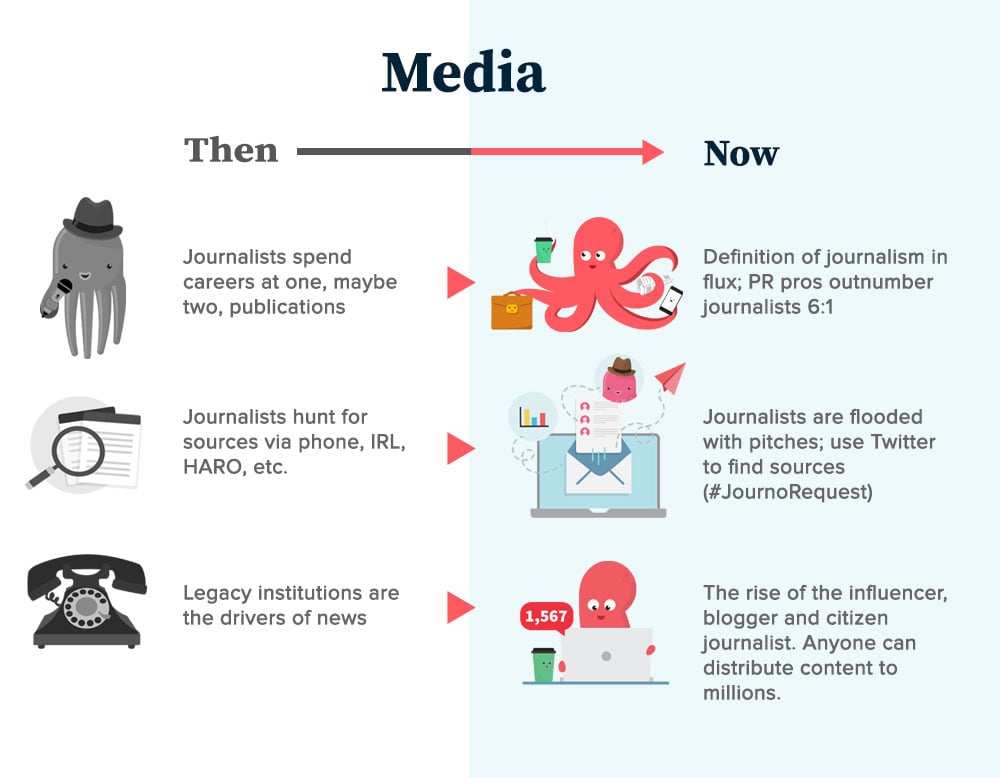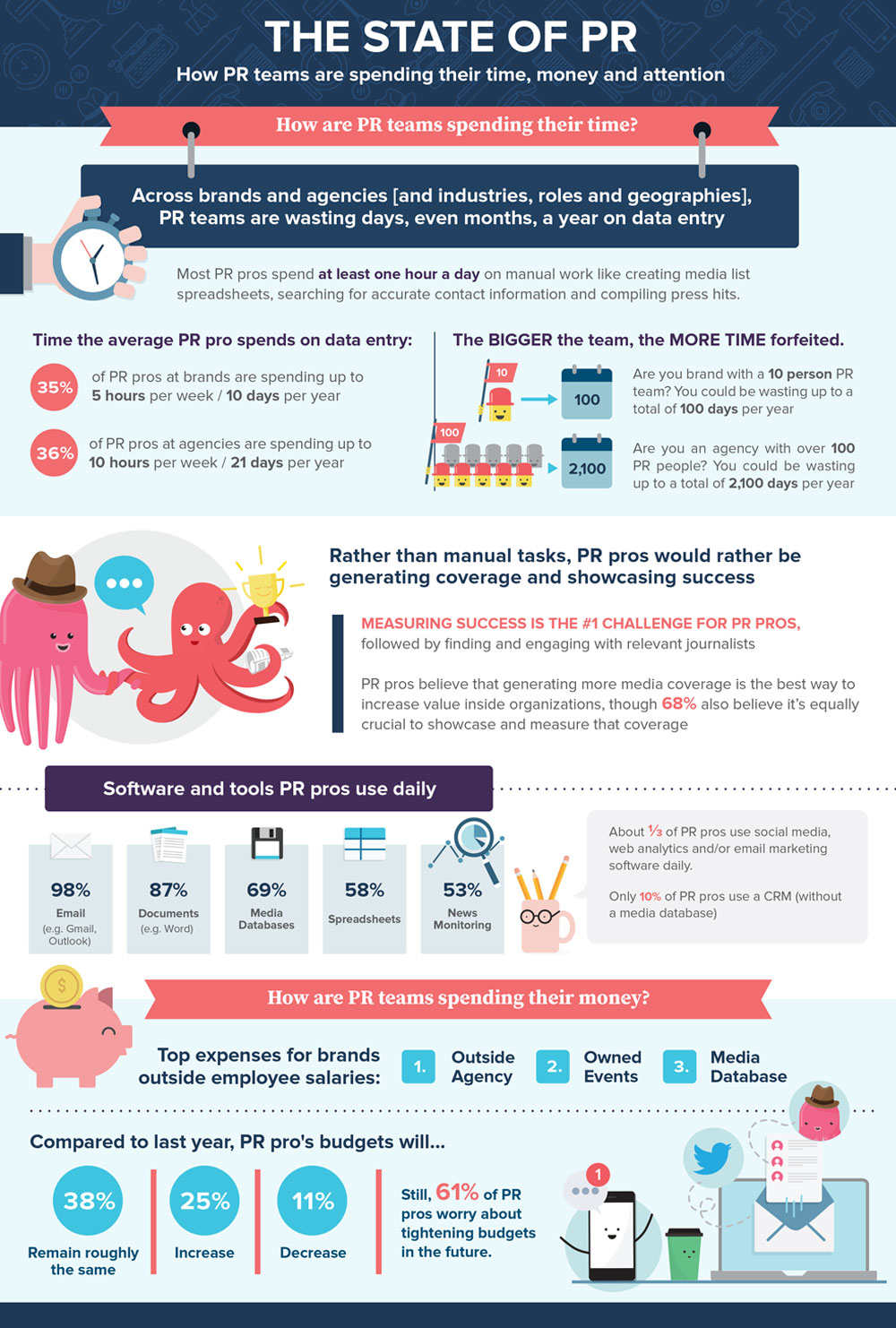Ready to find your ideal PR software? Consider these do’s and don’ts.
1) Don't Accept the Status quo
In 2022, there’s no reason to accept software you hate just because it’s a familiar choice. Media has shifted and there’s a good chance your tech stack needs to as well.
2) Don't accept that it’s OK to have to supplement your media database with Google, Twitter and other tools
Ever tried to pitch a reporter only to find they no longer work at that publication? Once that email bounces back, you’re off to Google and Twitter to research where the journalist has landed. Now you’ve wasted precious time you could be spending building a relationship with another relevant journalist.
Inaccurate information is a dealbreaker for good PR. In order to conduct effective media relations in 2022, you need access to accurate information about audiences and content that are prone to constant change.
3) Don't rely on spreadsheets for relationship management and collaboration
Media list spreadsheets are inadequate for today’s constantly changing environment. A spreadsheet doesn’t automatically update and notify you when a journalist changes position or switches publications. You have to try and track down that information yourself, then remember to update it across multiple media lists.
A lack of historical context on media relationships can make communication with reporters awkward, especially if you’re working as part of a larger team.
You need to know exactly who last contacted this reporter from your organization, when they reached out, what was said and — most importantly — what the result was, so you can best tailor your future efforts.
Ideally, there should also be an easy way to keep track of your colleagues’ media lists, notes, call logs, and pitches all in one place, helping prevent overlap and saving duplicative work. You should also be able to quickly see who on your team owns a particular contact to help further avoid any pitching missteps.
4) Don’t ignore the importance of customer support
Customer support is key when it comes to selecting a media solution.
What happens when you can’t find a journalist’s contact information? What do you do if you’re having trouble finding what you need on the platform?
PR moves quickly. You’ll want to know that the solution you choose has a customer support team at the ready.
Read case studies and chat with a current customer to validate what the sales representative is sharing with you.
5) Do ask about search filtering and sample searches for the journalists you care about, not just the total number of journalists in the database
Large numbers sound great in theory, but how can you be sure that all those reporters apply to your objectives?
In fact, many legacy solutions will take one freelancer who writes for three separate publications and give them three separate profiles, inflating the data. Some even claim to list more journalists than the number that actually exist in the world.
Instead of asking, “How many reporters are there?” ask, “How relevant are the journalists in this database to my story idea and how will that help me to achieve my goals?”
On a live demo with a potential solution, ask to search a relevant keyword or topic you might pitch — see the types of results that arise from that search, and evaluate from there.
6) Do consider integrated media monitoring as a key feature
Timing is everything when it comes to finding new PR opportunities and identifying potential crises. Your media monitoring solution should enable you to track your company and competitors as news breaks and identify which journalists are already interested in topics related to your campaigns. Also crucially, the solution should notify you any time a journalist is looking for a source on a given topic or sharing relevant information on social media.
When paired with a media database, monitoring provides the context you need for meaningful and productive media relations.
7) Do ask if the software enables you to customize emails more than standard mail merge
Crafting and distributing a custom pitch shows reporters they aren't just an option—as our series “This month in bad PR pitches” illustrates, bad pitches aren’t just a waste of time—they’re a liability.
PR pros should be able to personalize pitch copy, subject lines and more for each recipient (vs mass pitches sent with only first name inserted).
Download our ultimate guide to pitching to increase your chances of success!







